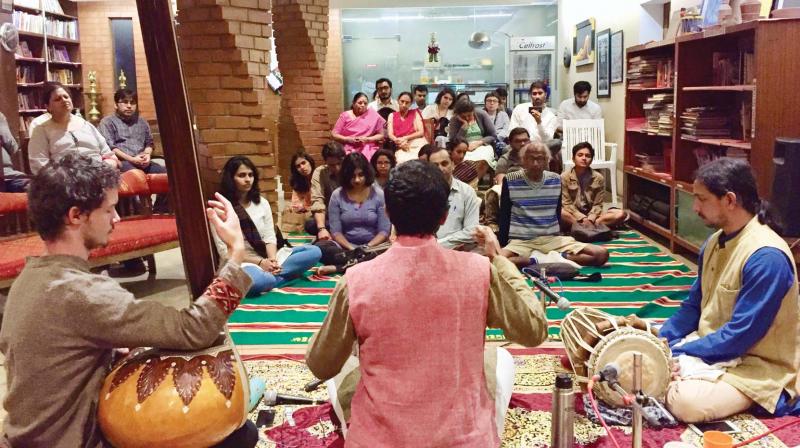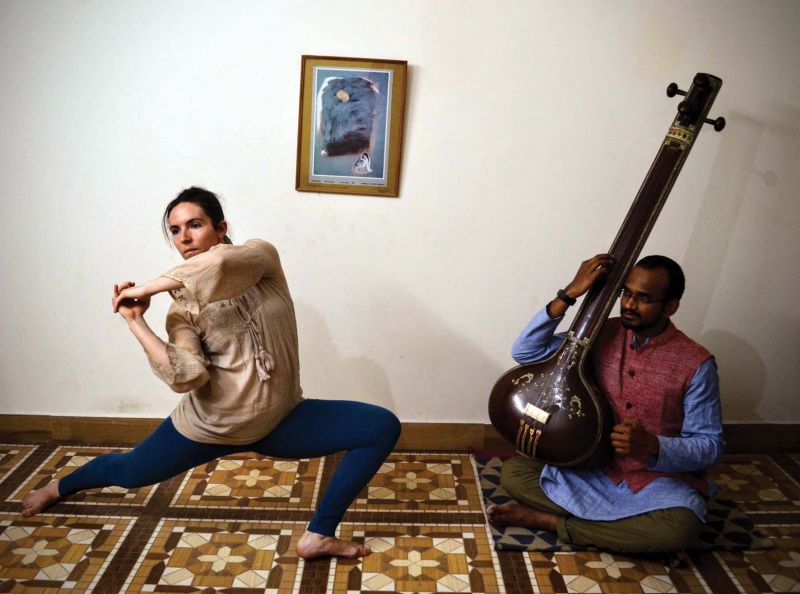‘Megh’ it rain with song and dance
“Who knows?†he asks. The last chapter has the composition written by Tansen on Lord Shiva while the music is set by Gundecha brothers.

“Who sings better than you?” This question was asked of the legendary singer Tansen by none other than King Akbar. “My guru Swami Haridas,” the singer replied. “The difference is that I sing for you and he sings for his god.” As a court musician, Tansen would have had to juggle with the responsibility of pleasing his royal audience with his quest to excel in his music. That fine line was not different from walking on a tightrope, explained Sajan Sankaran, a Dhrupad musician and writer, who is presenting Tansen on a Tightrope along with French dancer Lucille Belliveau and percussionist Ramesh Chandra Joshi. And the fact that they are combining music written about 500-600 years ago with contemporary dance is like walking on a tightrope itself.
The hour-long performance is a dramatised narration of Tansen’s works and draws inspiration from the various anecdotes in his lifes. “Almost everyone knows of Tansen as one of the greatest musicians but not many know that he was a Dhrupad singer,” says Sankaran who has had an interesting tryst with Dhrupad music. He hails from a non musical family, as he calls it. His future was kind of sealed when he studied engineering from IIT, Mumbai. But his interest in music, which was sparked in college, was whetted by a monthly music class with a teacher who lived off the campus. “There was no other real engagement with music,” he recalls but later, he decided to take an elective course in Hindustani music. Armed with a BTech degree from IIT, he decided to follow his passion and went to the gurukul of the Dhrupad maestros, the Gundecha brothers, in Bhopal. “It has been six years now and I still have a lot to learn.”
What lured him to Dhrupad music was its focus on the purity of the notes and sound, which is very high.The performance itself has been divided into four parts, or chapters, each comprising of an alap, a non textual improvised version of the raga, and a composition which has been written by Tansen himself. And visualising the journey of Tansen as a musician, they have called the chapters as Practice, Performance, Dissolution and finally, Devotion. “Every artist has to put in a lot of effort into practice. Imagine a great musician like Kishori Amonkar, who was known for her rendition of raga Bhopali, had expressed regret for not having found the right ‘dh’ in the raga. So, this chapter is about exploration of the alap with incremental notes.” This chapter will be in Raga Bhairav, an early morning raga traditionally sung by all musicians in the beginning of their performance and the composition is a description is a description of the natural beauty around Akbar’s court. It is also the longest segment.

The late morning raga Gurjari Todi is a majestic and has a fast moving tempo. “It is actually in the performative zone,” Sankaran explains. This chapter on performance is inspired by Kallaripayattu and the composition is in praise of King Akbar. The third chapter is in Raga Megh, the seasonal raga of the monsoons. It is based on the anecdote of Tansen being instigated to sing the mythical raga Deepak which was known to light lamps but at the same time fatally heat the singer’s body. In the throes of his ego and on the verge of burning himself, Tansen is saved by his dauther’s rendition of raga Megh which cools him down. The composition itself is a description of the rain. Is it really true that when one sings this raga, it rains? Sankaran laughs and narrates another anecdote. Coincidentally, the day he began practise the raga for this performance, he swears it had rained that day.
“Who knows?” he asks. The last chapter has the composition written by Tansen on Lord Shiva while the music is set by Gundecha brothers.
The entire composition is based on improvisations between Belliveau and Sankaran. “As I watched her dance, I began to see the concept in a new way,” he says. “The music is feeding both the musician and the dancer.” Belliveau is accomplished not only in contemporary dance techniques but also physical theatre, circus and Indian classical dance forms like Kallaripayattu and Kuchipudi. Their collaboration will answer the question if this unlikely combination can find the balance between tradition and modernity and, introspection and performance.
